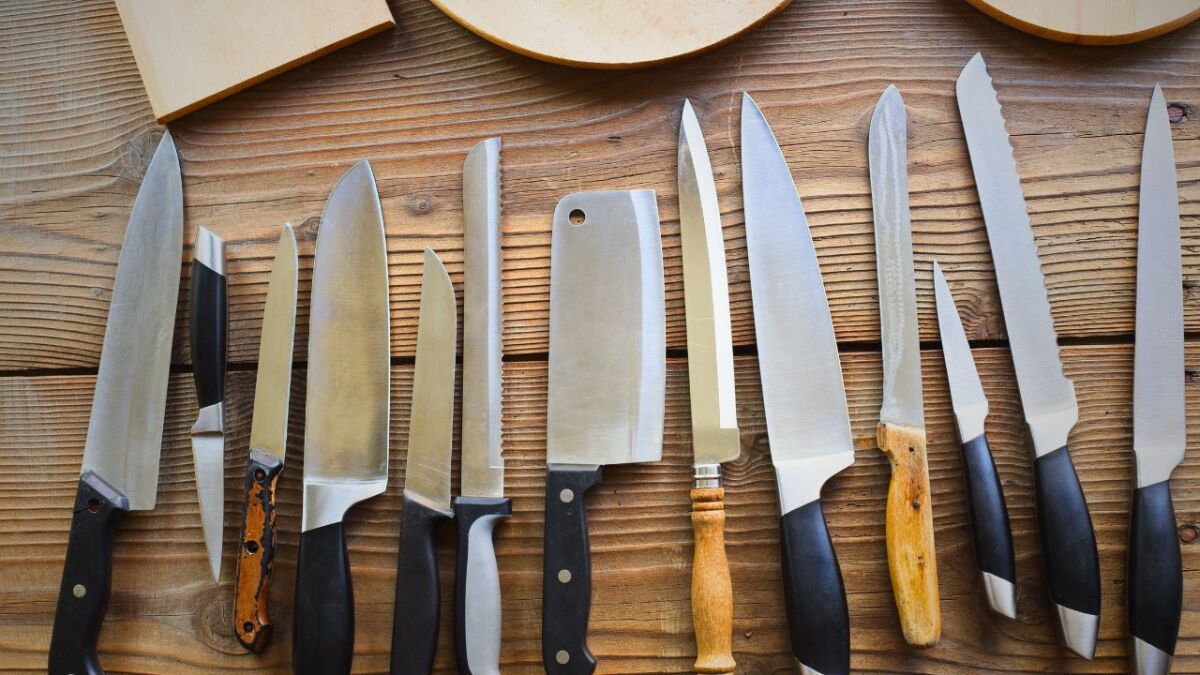
What are the common knife grinds for outdoor knives? (How to choose the right outdoor knife)
👉 The key facts from this guide
- A good outdoor knife is more than just a tool. The grind determines how well it cuts and what tasks it is suitable for.
- The Full Flat Grind is robust and versatile, good for general cutting tasks.
- The Scandi Grind is perfect for woodworking and carving, easy to sharpen.
- The Saber Grind is strong and durable, ideal for rugged tasks like chopping.
- The Hollow Grind is very sharp and suitable for fine cutting tasks, but it is not as robust.
- Choosing the right grind depends on your activities and needs. There is no "right" or "wrong," only what works best for you.
An outdoor knife is an essential tool for anyone who enjoys spending time in nature.
Whether you're camping, hiking, or simply going into the woods, a good knife is crucial.
But what types of knife grinds are there, and how do you choose the right outdoor knife?
In this article, we will discuss the different knife grind techniques and help you find the perfect edge for your outdoor adventures.
Basics of Knife Grinds
What is a knife edge?
Imagine you are in the wilderness, surrounded by the untouched beauty of nature. You have your outdoor knife with you, your faithful companion.
But have you ever wondered what the secret behind the sharpness of your knife is?
It's the knife cut.
A knife edge is the way the blade of your knife is sharpened. It determines how well your knife cuts, how long it stays sharp, and how easy or difficult it is to sharpen.
It is the fine art of transforming the metal blade into a sharp edge that is ready to conquer any challenge that the wilderness presents to you.
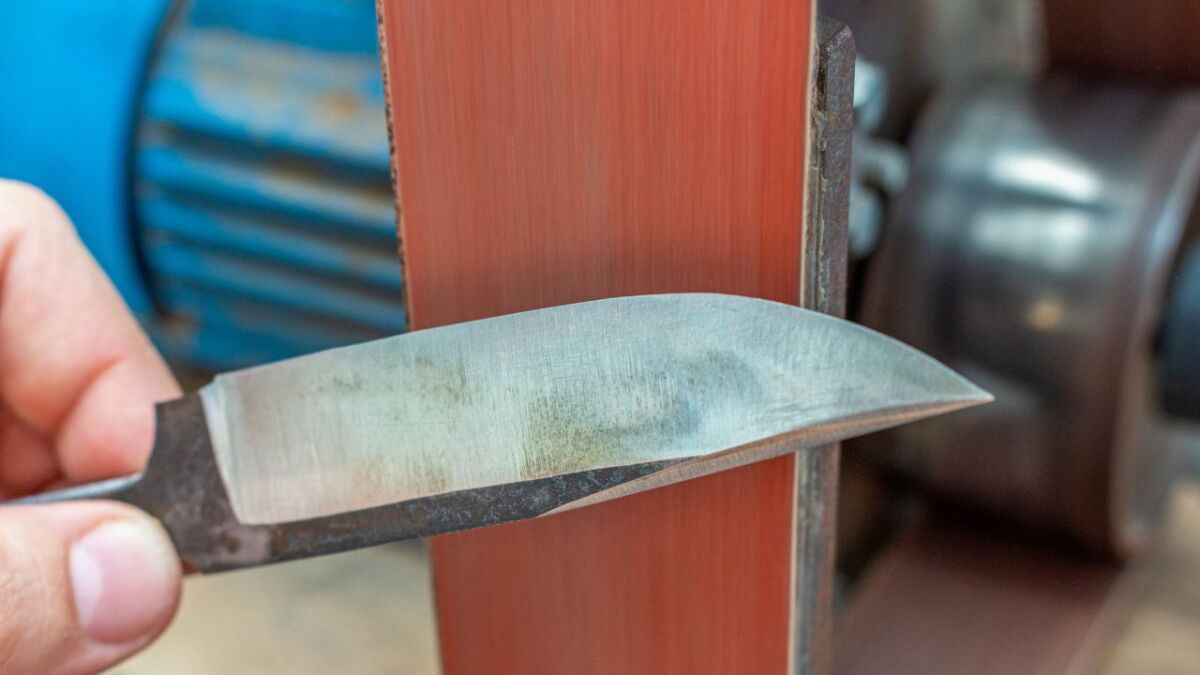
Why is the cut important?
The edge of your knife is like the foundation of a house - it holds everything together.
A well-sharpened knife not only cuts better, but is also safer to use.
A dull knife can slip and cause accidents, while a sharp knife works precisely and efficiently (read more about the topic here).
Furthermore, the grind determines which tasks your knife is best suited for.
Whether you're chopping wood, filleting fish, or cutting a rope - the right grind makes all the difference.
Basic Terminology
Before we delve deeper into the various types of knife grinds, let's clarify some basic terms:
- Blade: The metallic part of the knife that is used for cutting.
- Edge: The sharp part of the blade. This is where the actual cutting takes place.
- Back: The opposite side of the edge. In some knives, the back is unsharpened.
- Bevel: The part between the blade and the edge.
- Tip: The end of the blade. The shape of the tip depends on the design of the knife.
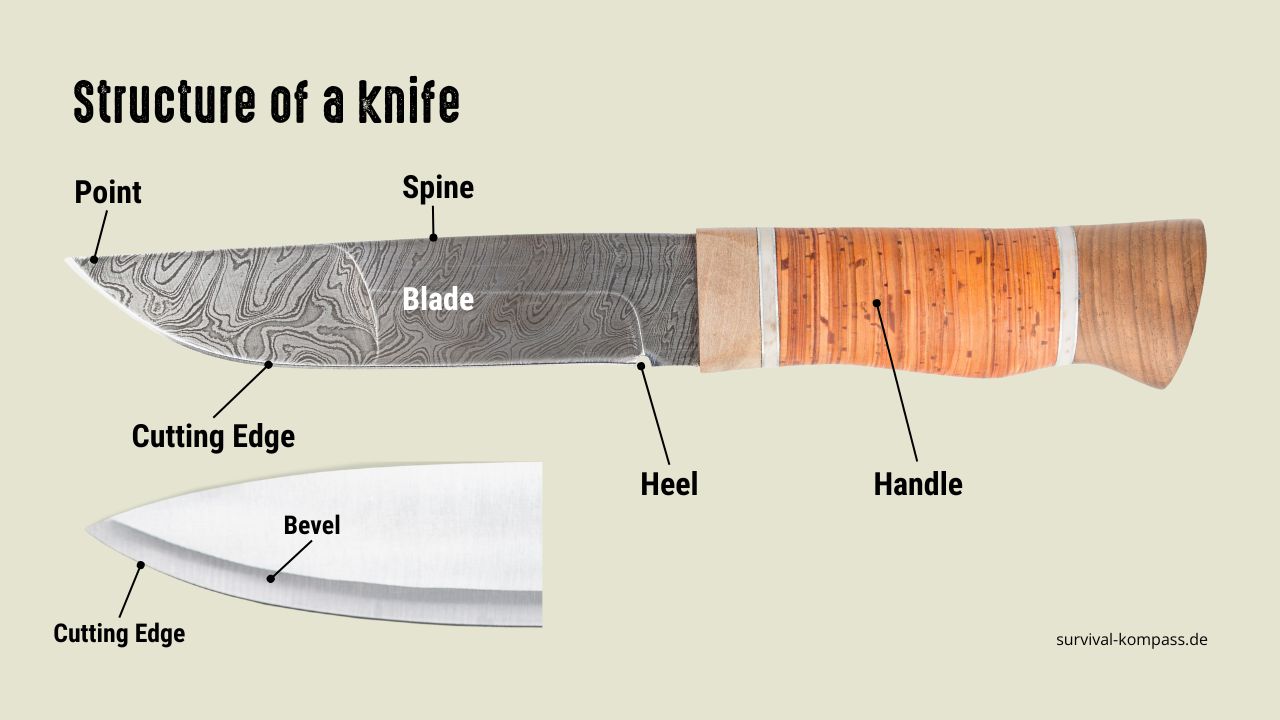
Now that you know the basics, you are ready to delve deeper into the world of knife grinds.
Get ready to take your knowledge of outdoor knives to the next level!
What types of knife grinds are there? - Quick overview
Below, I have created a table for you to give you an immediate overview of the most common knife cuts.
| Blade Grind | Applications | Advantages | Disadvantages | Types of Knives |
|---|---|---|---|---|
Full Flat Grind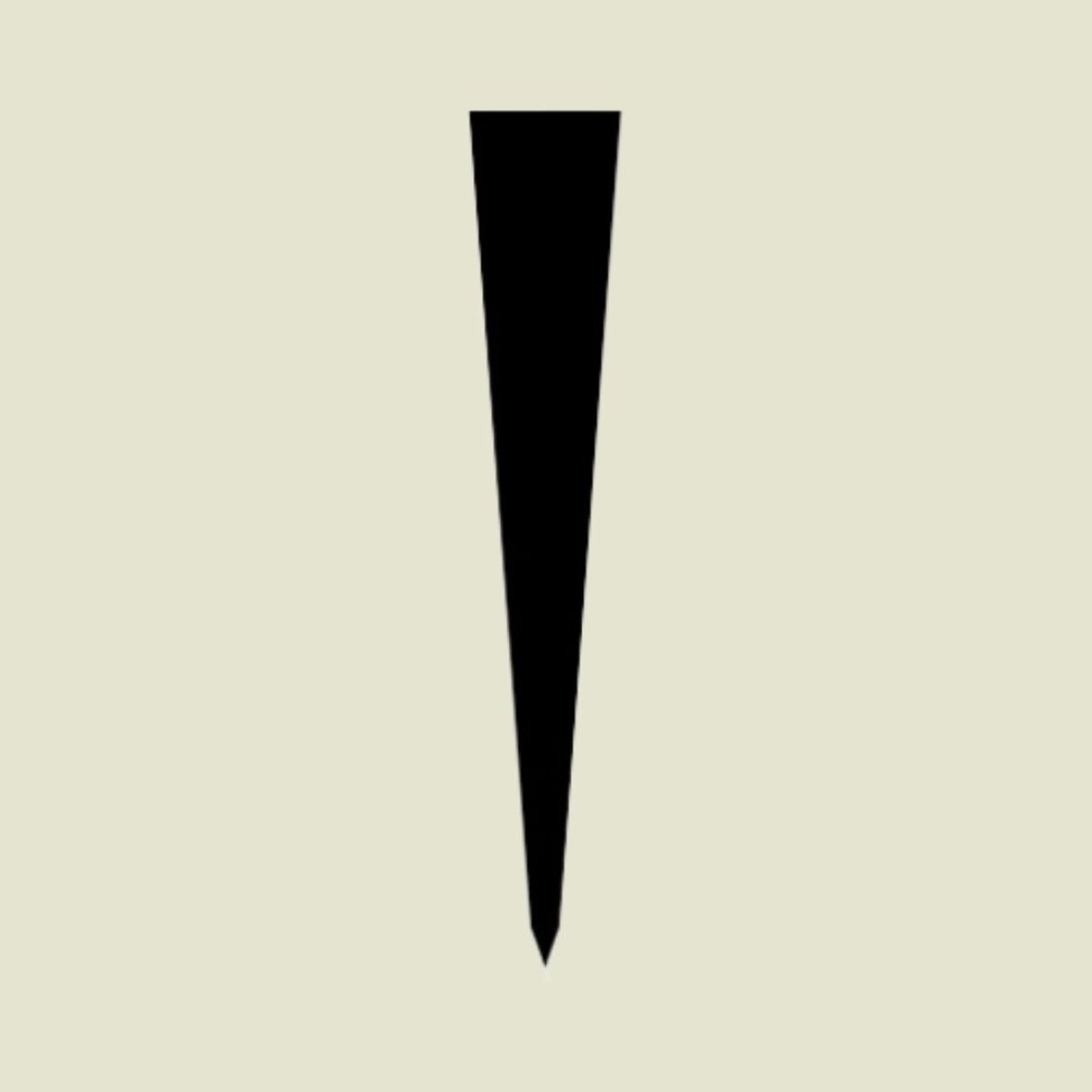 |
General cutting tasks | Durable, stable, easy to sharpen | Not ideal for very fine cutting tasks, doesn't cut as well as a Hollow Grind, not as durable as a Saber Grind | Outdoor knives, EDC knives, kitchen knives, hunting knives |
Scandi Grind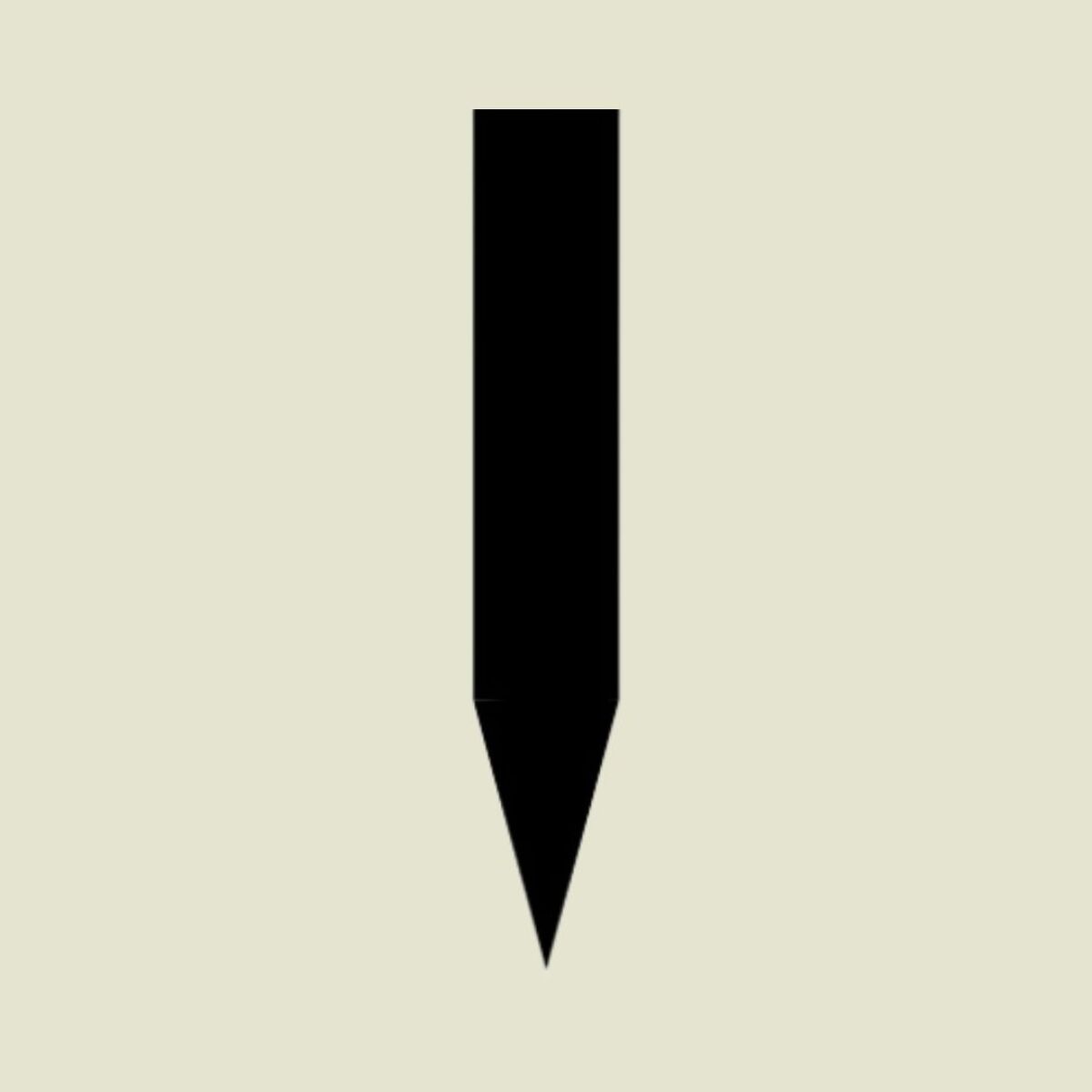 |
Woodworking, carving | Very sharp, easy to sharpen, strong cutting edge | Not ideal for cutting hard materials, requires significant material removal when sharpening | Bushcraft knives, carving knives |
Saber Grind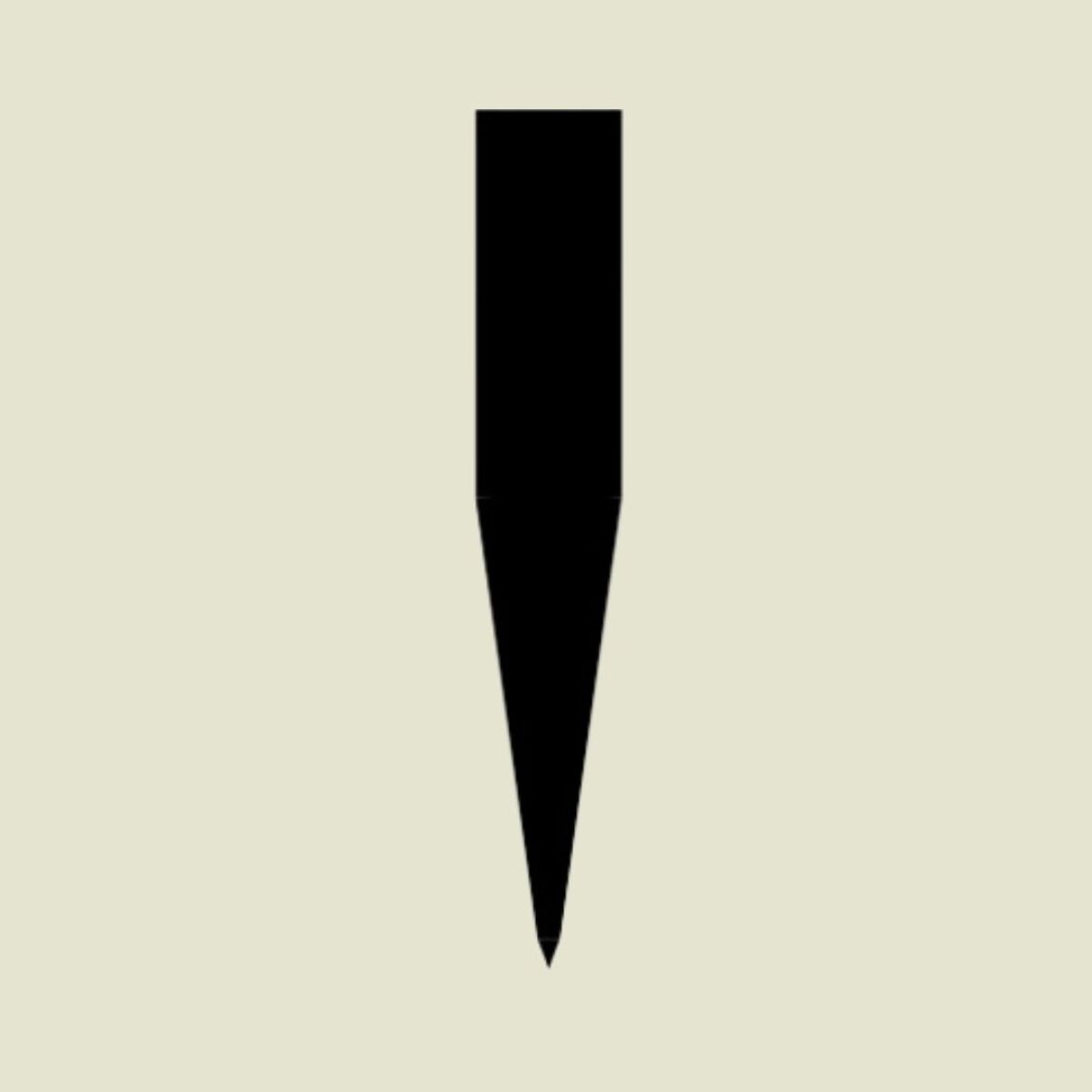 |
Robust cutting tasks, chopping | Good balance between sharpness and durability, excellent durability | Not ideal for fine cutting tasks, cutting ability often lower than other grinds | Military knives, tactical knives |
Convex Grind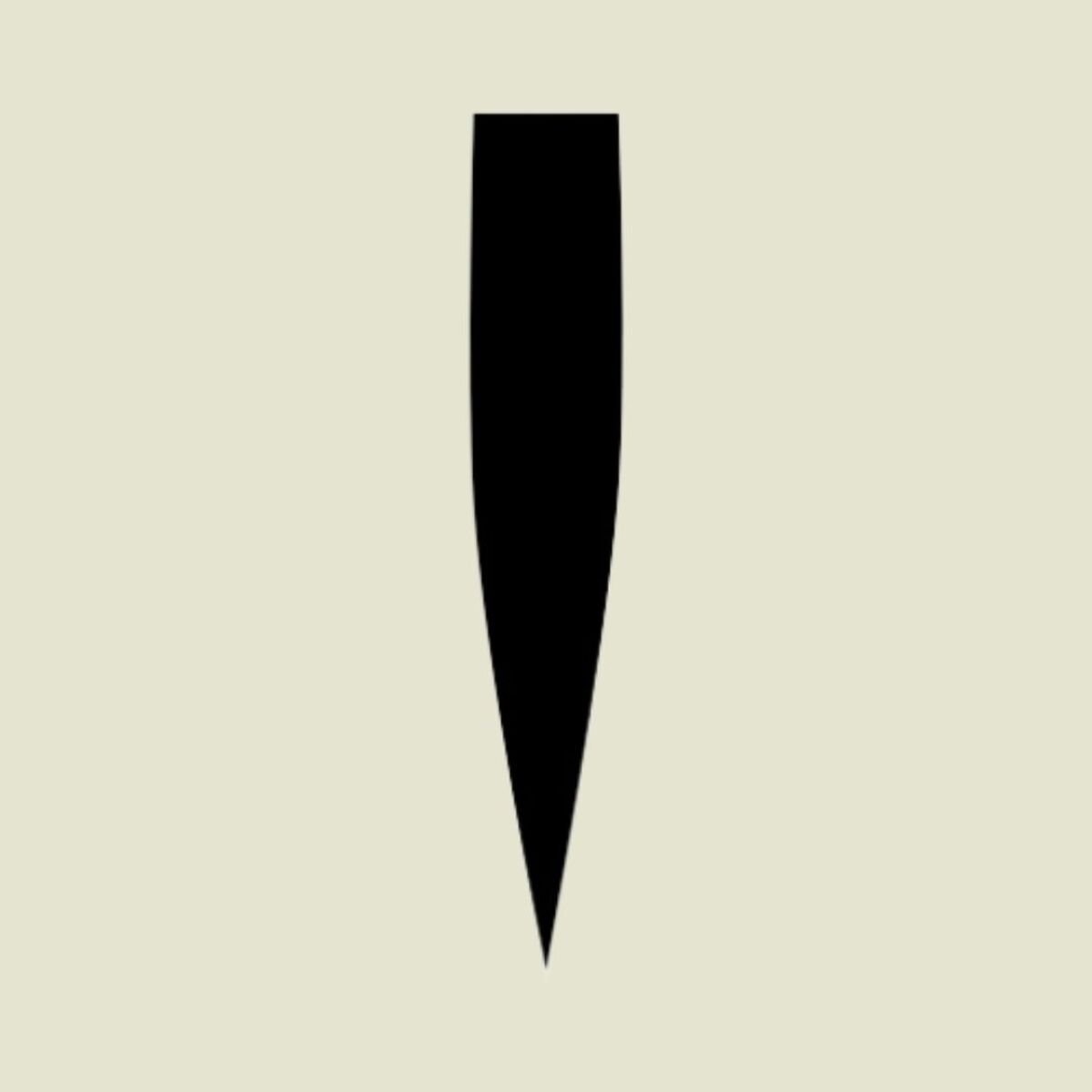 |
Wood chopping, heavy-duty tasks | Extremely robust and durable | Not as sharp as other grinds, difficult to sharpen and maintain, cutting performance can vary greatly depending on angle | Axes, sometimes machetes, some large outdoor knives |
Hollow Grind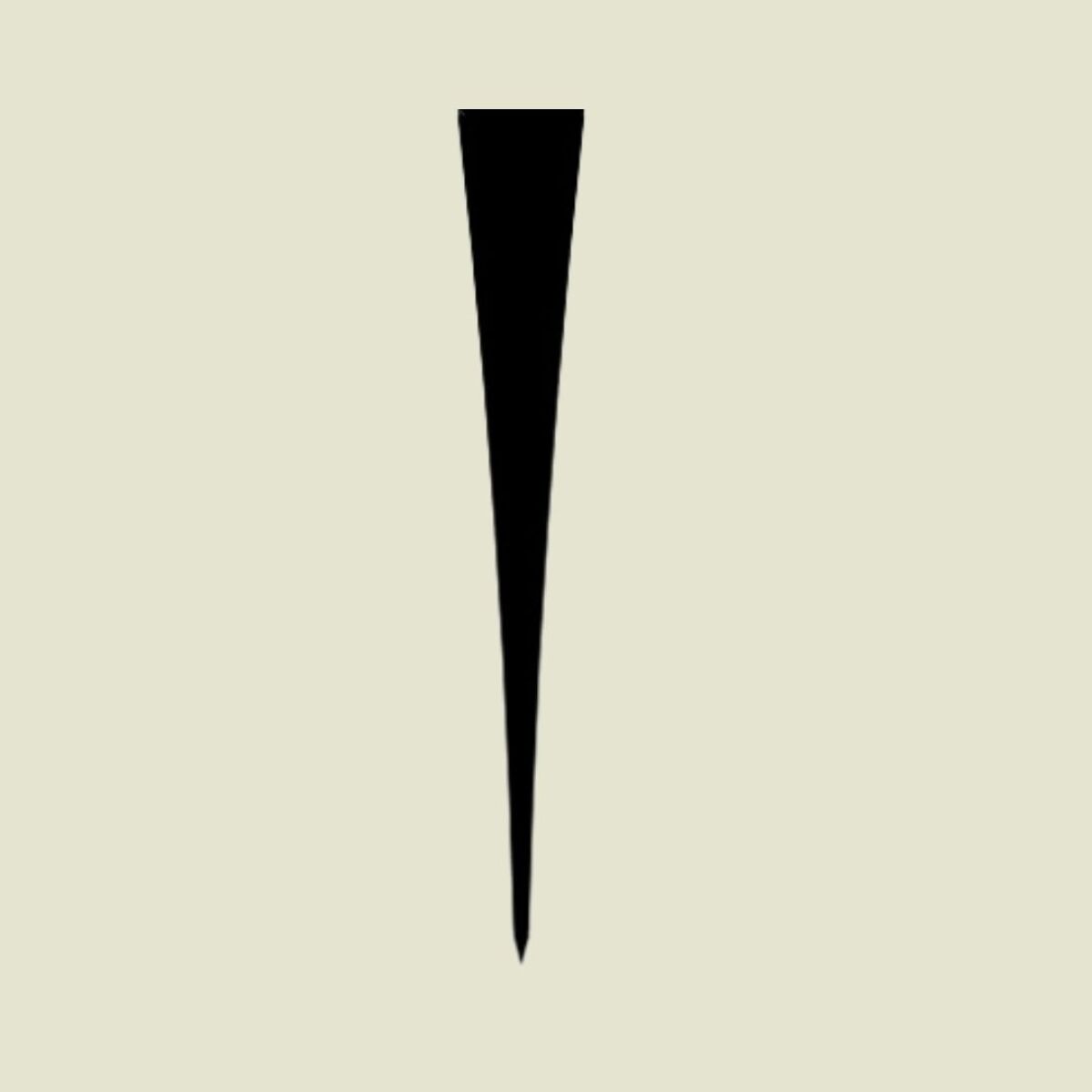 |
Fine cutting tasks, game processing, vegetable cutting | Very sharp, effortlessly cuts through various materials, perfect for game processing | Not as durable as other grinds, can be damaged with hard materials, unsuitable for heavy-duty tasks, chopping will damage the blade | Hunting knives, skinners, straight razors, outdoor knives, small to medium-sized EDC blades |
Chisel Grind |
Versatile cut | Durable, robust, easy to sharpen, versatile | Some getting used to when cutting is necessary | Hunting knives, chef's knives, outdoor knives |
| Flat Hollow Grind | General cutting tasks | Sharp, durable, versatile | More difficult to sharpen than other grinds | Outdoor knives, hunting knives |
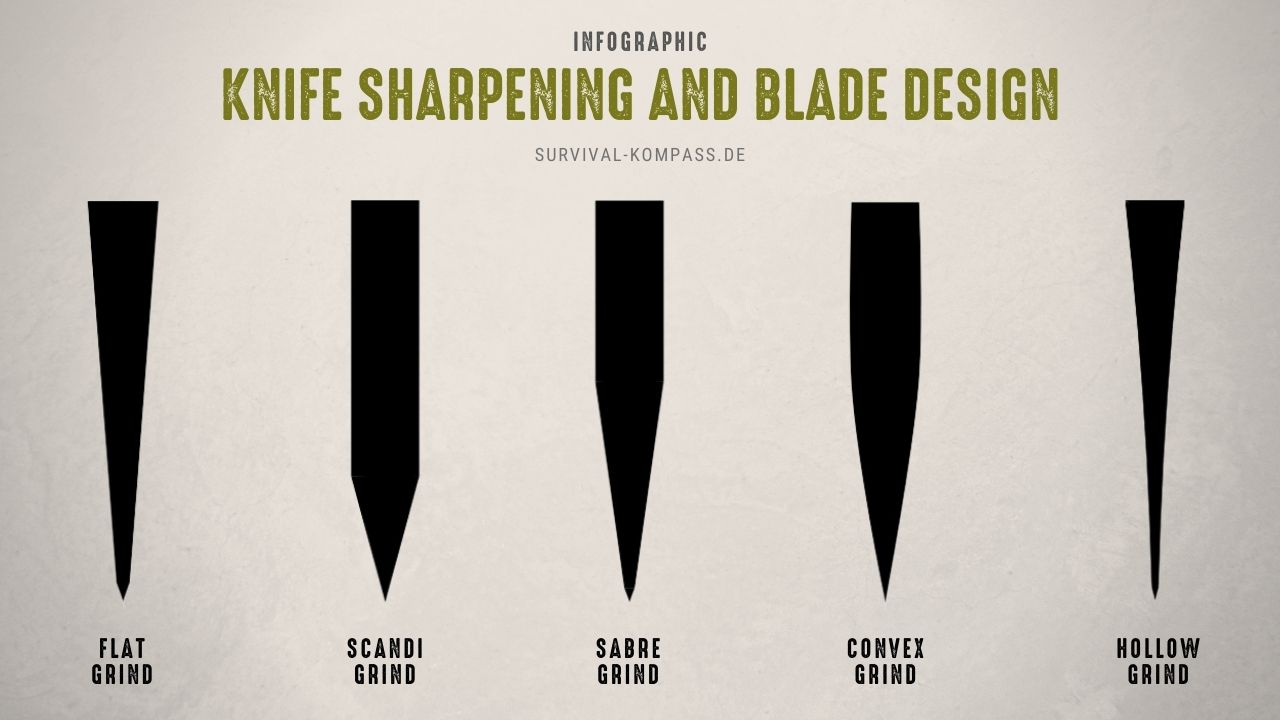
The different types of knife edges
Let's now delve into the various knife cuts in detail.
Full Flat Grind
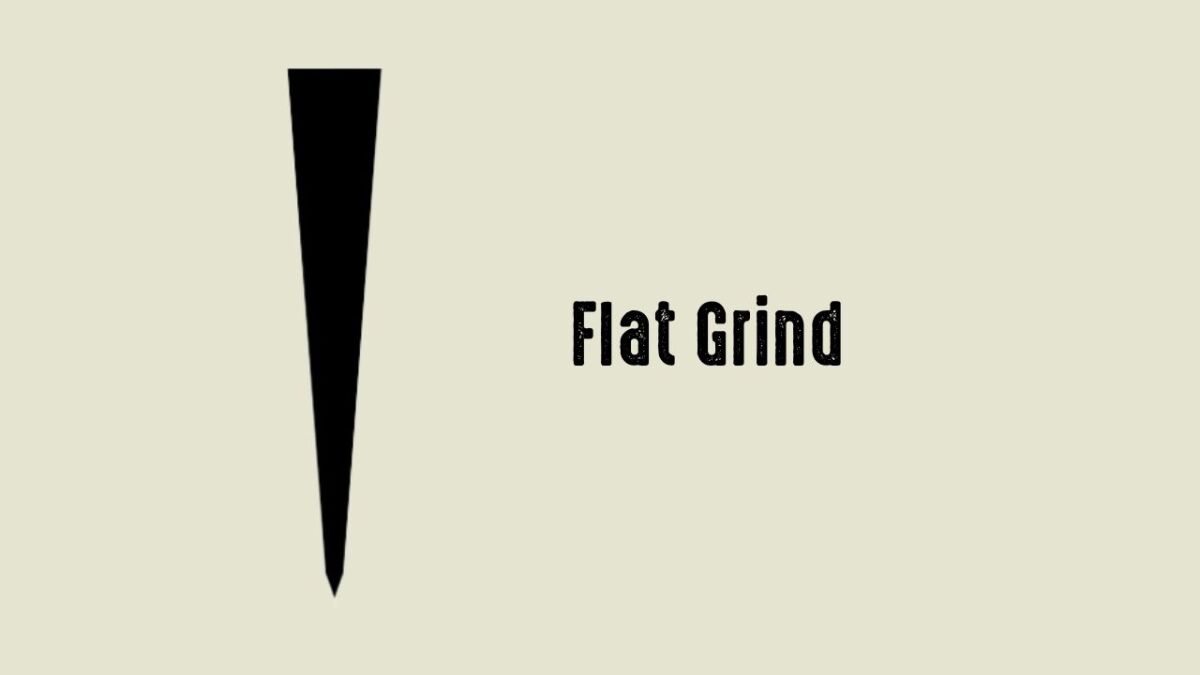
The Full Flat Grind is thick at the back. This makes the knife strong. But the tip is thin, so you can cut well. There is less steel on the sides, which makes cutting easy.
The knife cuts through things well. It is stronger than a Hollow Grind and cuts better than a Saber Grind.
The main blade of the Flat Grind runs linear and slowly. This allows the Flat Grind to penetrate materials more easily than other grinds that are non-linear (hollow) or inclined at steeper angles (saber).
Exactly, that's the Full Flat Grind. I've seen and used it often with my outdoor knives.
He is robust and stable, perfect for general cutting tasks. It can be thick and heavy or extremely thin and sharp. Or it can be a balance between the two.
And the best part? It is easy to sharpen and offers a good balance between sharpness and durability.
- Applications: General cutting tasks
- Advantages: Robust, stable, easy to sharpen
- Disadvantages: Not ideal for very fine cutting tasks, does not cut quite as well as a Hollow Grind, not quite as robust as a Saber Grind
- Types of knives: Outdoor knives, EDC knives, kitchen knives, hunting knives
Scandi Grind
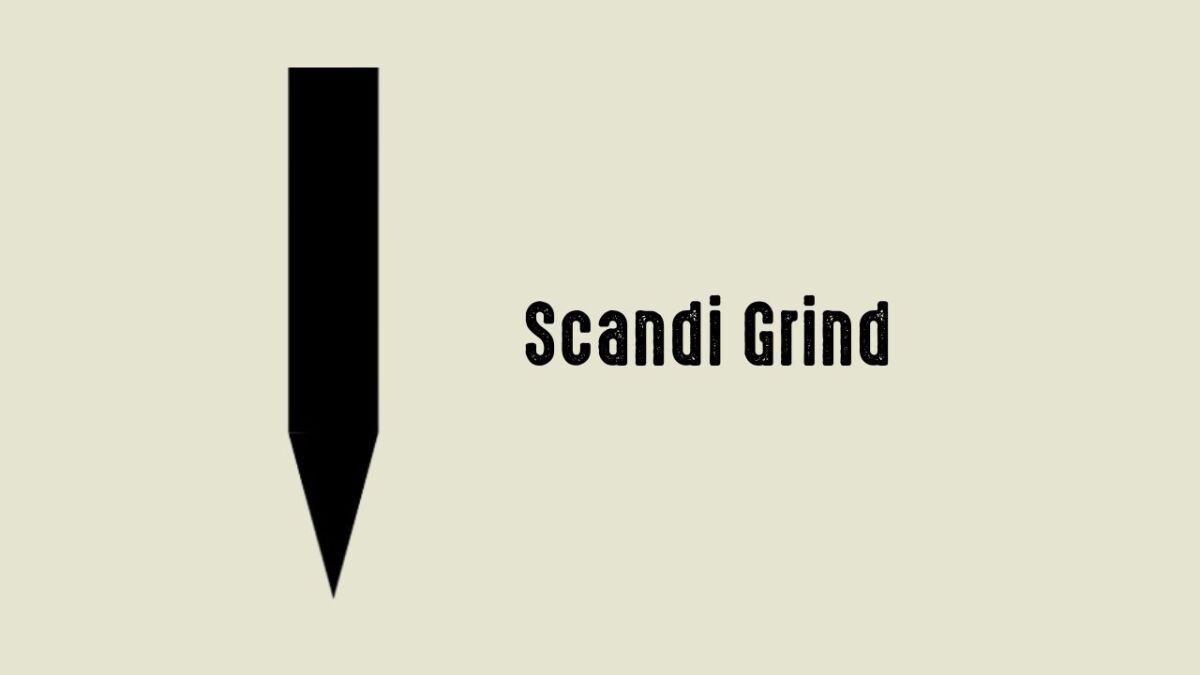
The Scandi grind is a traditional knife grind from Scandinavia.
The blade is flat and has a single cutting edge (no secondary bevel). I love it for woodworking and carving.
There is only one primary grind that is ground to zero to maintain the cutting edge, sometimes also called Zero Sabre Grind. This leaves a lot of material behind the edge and strengthens it.
He creates a very sharp edge that is easy to sharpen. He is very popular among Bushcraft enthusiasts.
- Applications: Woodworking, carving
- Advantages: Very sharp, easy to sharpen, strong cutting edge
- Disadvantages: Not ideal for cutting hard materials, requires a lot of material removal when sharpening
- Types of knives: Bushcraft knife, carving knife
Sabre Grind or Saber Grind
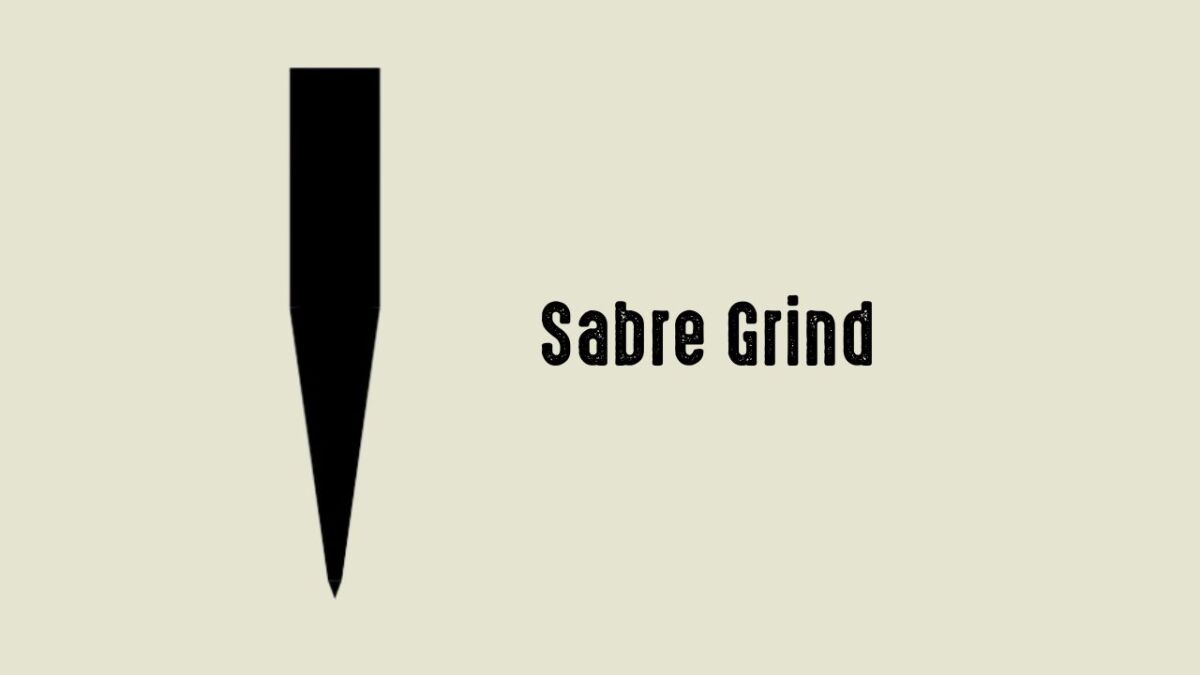
The Saber Grind is another traditional grind that is often found in military and tactical knives.
The Saber Grind is used when the manufacturer desires a stronger blade. In order to fully utilize the stronger blade, the tang is often kept slightly thicker so that the blade can withstand heavy use, such as chopping.
He offers a good balance between sharpness and durability and is ideal for robust cutting tasks.
- Applications: Robust cutting tasks, chopping
- Advantages: Good balance between sharpness and durability, excellent durability
- Disadvantages: Not ideal for fine cutting tasks, cutting ability often lower than with other grinds
- Types of knives: Military knives, tactical knives
Convex Grind
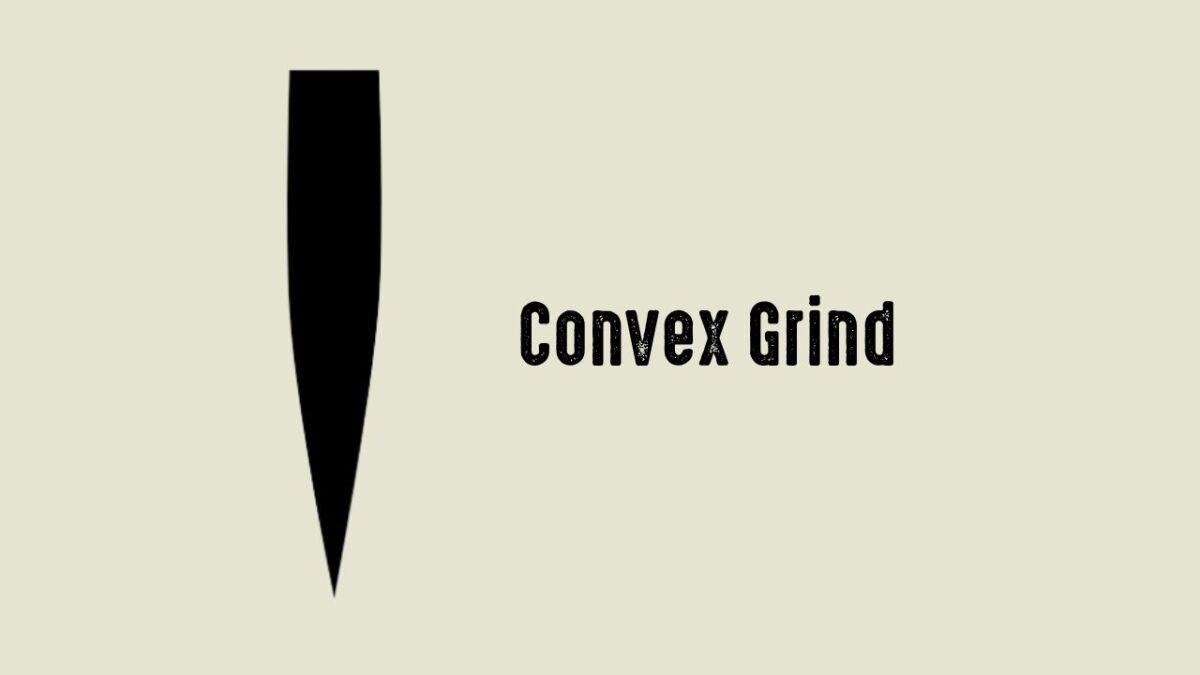
The convex cut is a very old and traditional cut, which is often found in axes and some outdoor knives.
The convex cut transitions into a convex curve towards the edge. It resembles the saber cut in that it (typically) still has a lot of steel in the middle of the blade, making it the thickest of the main cutting styles.
He is extremely robust and durable, but not as sharp as other grinds. I find it ideal for chopping wood and other heavy tasks. However, I don't think the Convex Grind makes sense for smaller knife sizes.
- Applications: Strong cutting, chopping wood, heavy tasks
- Advantages: Extremely robust and durable
- Disadvantages: Not as sharp as other grinds, difficult to sharpen, difficult to maintain, cutting performance can vary greatly depending on the angle
- Types of knives: Axes, sometimes machetes (Kukris), some large outdoor knives
Hollow Grind
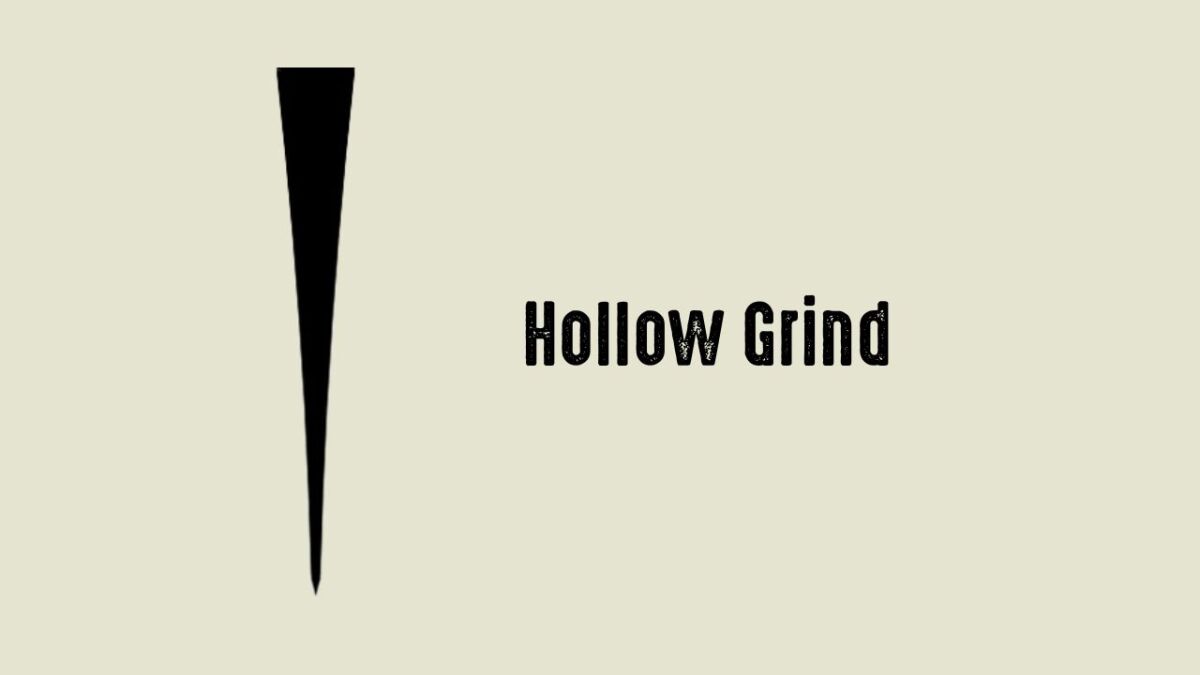
The Hollow Grind is like a master of sharpness. The blade is concave in shape, which results in a thin edge. A full Hollow Grind extends from the edge to the spine.
I have used it with hunting and outdoor knives and have always been impressed with how effortlessly it cuts through various materials.
The Hollow Grind is great because it keeps the blade thin. Even when you sharpen it, it stays as thin as it was in the beginning. This actually makes sharpening easy at first, but later on it becomes more difficult.
He is particularly good for delicate cutting tasks such as butchering game or cutting vegetables.
- Applications: Fine cutting tasks, game processing, vegetable cutting
- Advantages: Very sharp, effortlessly cuts through various materials, perfect for game processing (skinning)
- Disadvantages: Not as robust as other grinds, can be damaged with hard materials, unsuitable for heavy-duty work, chopping will damage the blade
- Types of knives: Hunting knife, skinner, straight razor, outdoor knife, small to medium-sized everyday carry blades
Chisel Grind
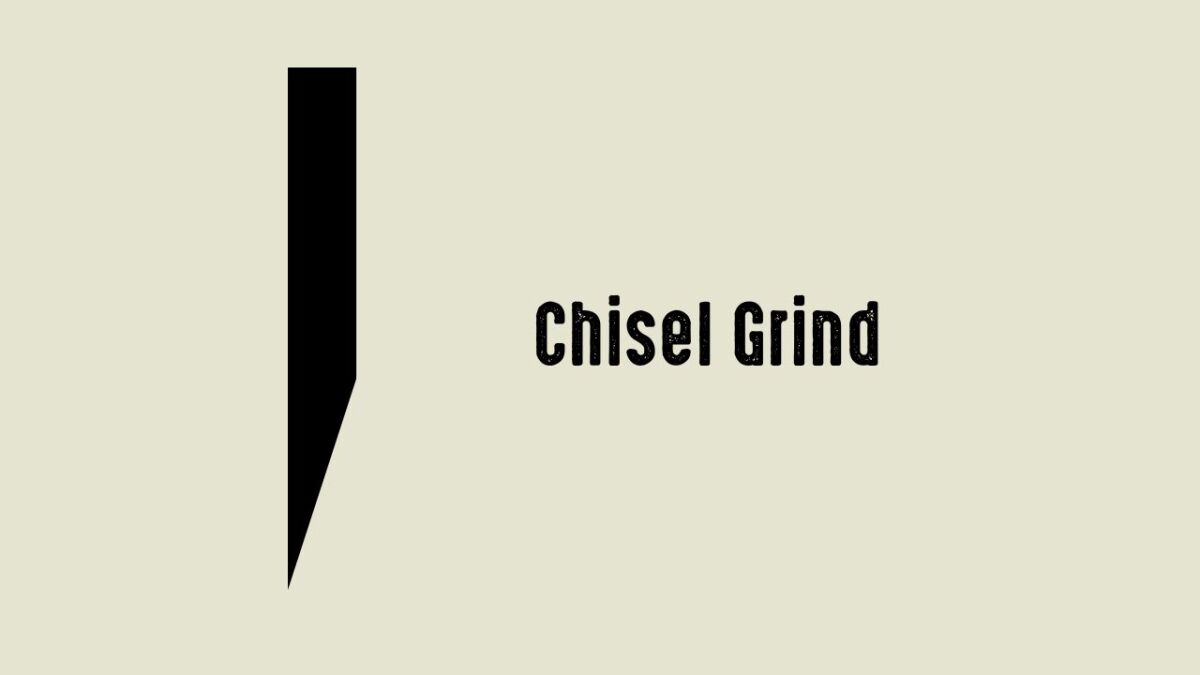
The chisel grind, also known as the chisel grind, is an asymmetrical grind in which only one side of the blade is sharpened while the other side remains flat.
I only learned about this cut when I held a Yakut knife in my hand (Here's my guide: What is a Yakut knife?). This grind creates a very sharp edge that is ideal for precise cuts. However, the blade is not that robust, but it can be easily sharpened.
The chisel cut fascinates me because of its incredible sharpness and precision, like the hand-forged Yakut knives from Siberia. However, it requires more care and skill in handling and care.
- Applications: Fine cutting tasks, precision cuts, very versatile
- Advantages: Very sharp, precise cuts, easy to sharpen
- Disadvantages: Not so sturdy, requires careful handling and care
- Types of knives: Traditional Japanese kitchen knives (Sashimi, Santoku), modern pocket knives, Yakut knives
Flat Hollow Grind
The flat hollow cut is like a hybrid of the full flat cut and the hollow cut.
The blade is initially concave and then transitions into a Flat Grind.
This grind gives the knife a very sharp edge, which is also slightly more robust than with a pure Hollow Grind.
I find it ideal for general cutting tasks and a versatile choice for outdoor knives.
- Applications: General cutting tasks
- Advantages: Sharp, durable, versatile
- Disadvantages: More difficult to sharpen than other grinds
- Types of knives: Outdoor knives, hunting knives
How to choose the right knife edge?
The choice of the right knife edge can be a challenge, especially if you are new to the world of outdoor adventures.
But don't worry, I'm here to help you. There are some factors you should consider when choosing your knife grind. Let's go through them together.
Depending on the purpose / activity
The first factor you should consider is the type of activity you want to perform. Different activities require different blade edges.
For example, if you plan on doing a lot of carving, a Scandi grind is an excellent choice. Its flat edge is perfect for precise carving work.
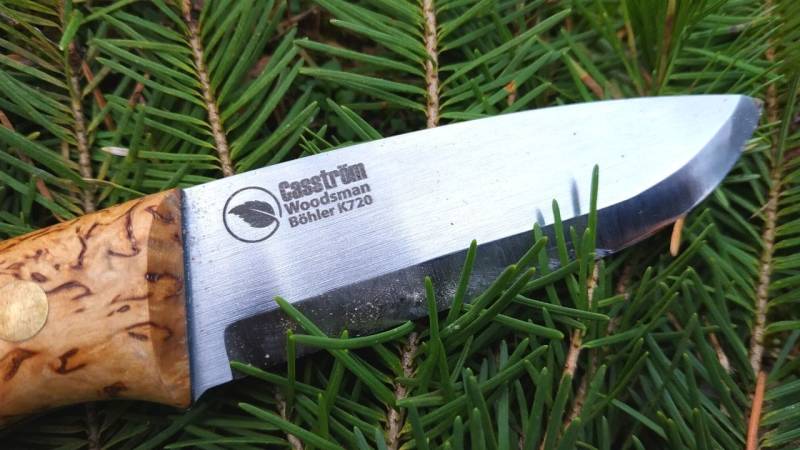
If, however, you plan to hack through dense undergrowth, a more robust grind like the Full Flat Grind would be better suited.
For general cutting tasks, a Full Flat Grind or a Flat Hollow Grind is suitable.
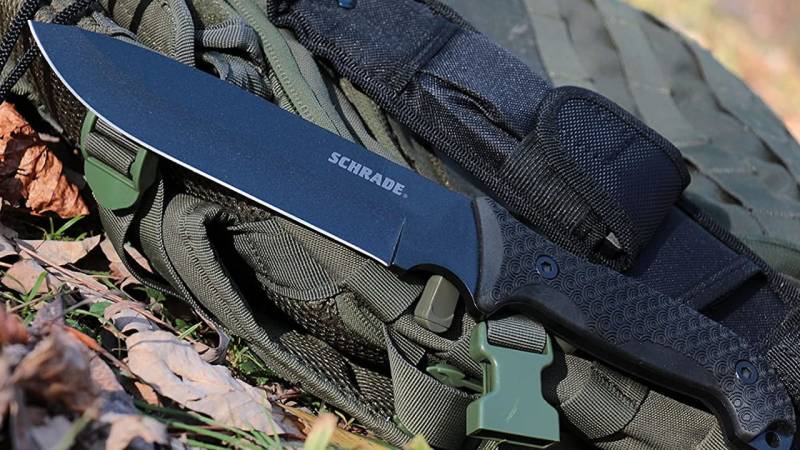
Depending on the material
The second factor is the material you want to cut. Different materials require different grinds.
If you plan on working with a lot of wood, a knife with a Scandi grind would be ideal. Its flat edge is perfect for splitting wood.
If, however, you plan on cutting a lot of meat, a knife with a Hollow Grind would be better suited. Its sharp edge effortlessly glides through meat.
For other materials such as ropes or vegetables, a Hollow Grind or a Full Flat Grind is suitable.
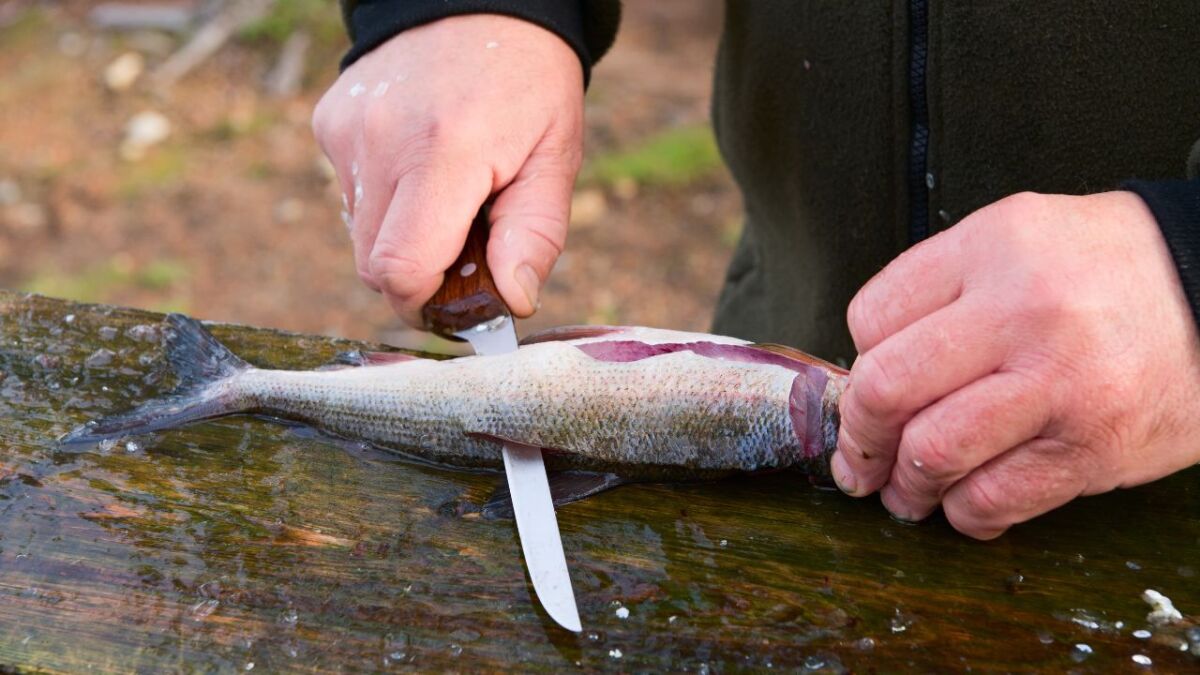
Dependent on Simplicity
If you value a particularly sharp blade, you should consider a Hollow Grind or a Scandi grind.
These grinds allow you to easily sharpen the knife and achieve an extremely sharp edge.
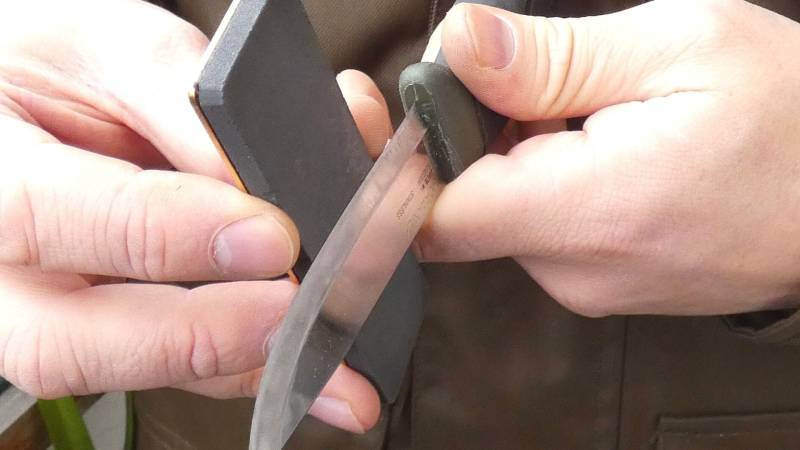
Read here: This simple and inexpensive trick shows you how to keep your knife with a Scandi grind sharp
Dependent on Robustness
If you are looking for a knife that is particularly robust and durable, a Full Flat Grind, Saber Grind, or Convex Grind is a good choice. These grinds offer a good balance between sharpness and durability.
Depending on personal preference
The last factor is your personal preference.
Ultimately, you should choose a knife that feels right for you.
Maybe you prefer a knife with a Hollow Grind because you love its sharp edge. Or perhaps you prefer a knife with a Flat Grind because you appreciate its durability.
Remember that there is no "right" or "wrong" when it comes to selecting the blade edge.
It's about what works best for you.
I hope that these tips will help you pick the right knife grinds for your needs.
Remember that the most important thing is that you feel comfortable and safe with your knife.
So take the time to try out different cuts and find out which one suits you best.
Frequently Asked Questions (FAQs)
Now that you know the basics of knife grinds and its different types, surely some questions arise.
Here are some of the most common questions I hear from outdoor enthusiasts.
What is the best blade edge for outdoor activities?
The best knife edge for outdoor activities depends on your individual needs and preferences. If you primarily have fine cutting tasks, a Flat Grind or Scandi Grind is a good choice.
How do I sharpen a knife with a Hollow Grind?
To sharpen a knife with a Hollow Grind, you can use a sharpening stone or a sharpening device. Hold the knife at an angle of about 15-20 degrees to the sharpening surface and draw it across the sharpening stone several times to sharpen the edge.
Make sure to apply even pressure and regularly check the knife to ensure that the blade is sharpened evenly.
How do I care for an outdoor knife?
To properly maintain an outdoor knife, you should clean and dry it regularly, especially after use in damp environments. Use warm soapy water and a soft brush to remove dirt and residue.
Also make sure to regularly sharpen the blade and oil the knife if necessary to prevent rust formation.
Which knife size is best for outdoor activities?
The best knife size for outdoor activities depends on your individual needs and preferences.
A small knife with a blade length of 8 to 10 cm is usually sufficient for most cutting tasks while camping or hiking.
If, however, you want to tackle larger tasks like chopping wood, a larger knife with a blade length of 10 to 15 cm is recommended.
What is the difference between a fixed blade knife and a folding knife?
A knife with a fixed blade has a solid, immovable blade, while a folding knife has a foldable blade that can be folded into a handle.
Knives with fixed blades are generally more robust and durable, while folding knives are more compact and easier to transport.
The choice between a fixed blade knife and a folding knife depends on your individual needs and preferences.
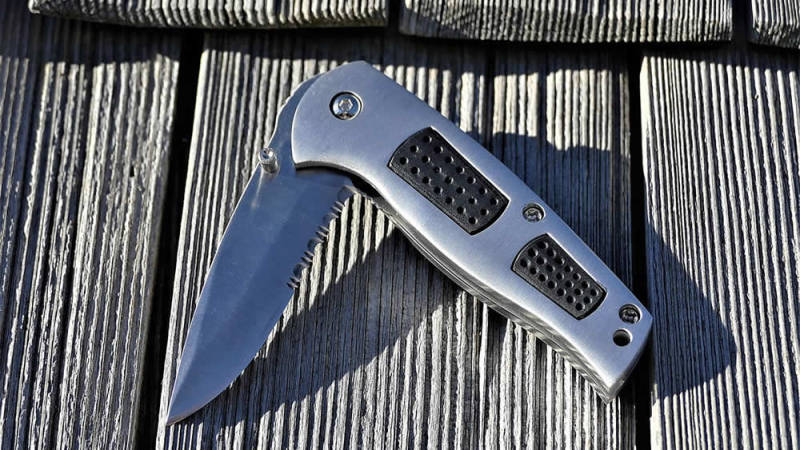
Can I have multiple grinds on one knife?
Yes, that is possible. Some knives, especially multipurpose knives, can have multiple edges to increase their versatility.
One part of the blade could have a sturdy Flat Grind for rough work, while another part has a finer Hollow Grind for precise cutting tasks.
However, it is important to note that sharpening such knives requires some practice.
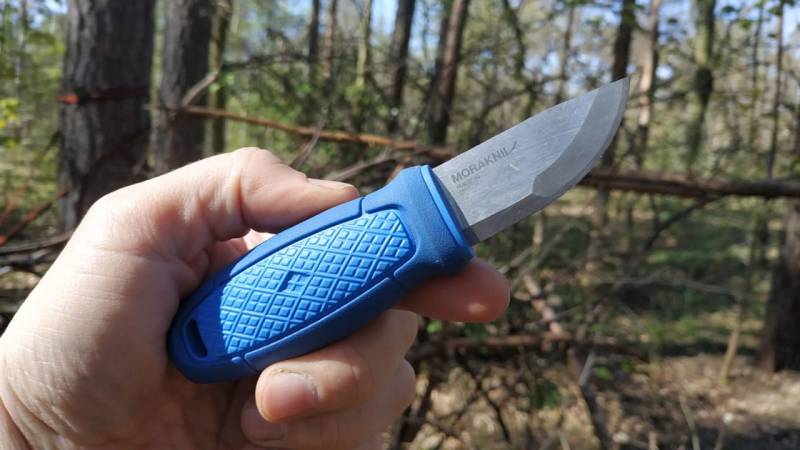
Reading tip: Mora Eldris - the Neckknife by Morakniv - a review and test report
How do I care for the different cuts?
The care of your knife depends heavily on its edge. Some edges, like the Flat Grind, are quite easy to maintain and can be sharpened with a standard sharpening stone.
Others, like the Hollow Grind, require more care and possibly special grinding tools.
Regardless of the grind, it is essential to keep your knife clean and dry to prevent rust and corrosion.
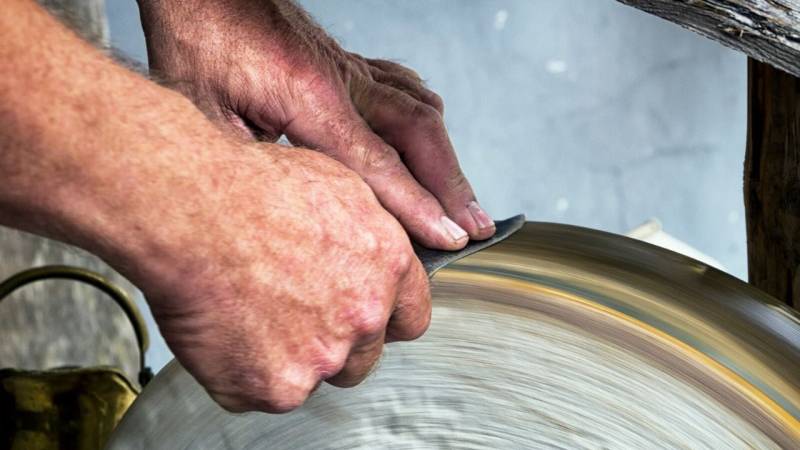
Which edge is the easiest to sharpen?
The Flat Grind is generally considered the easiest grind to sharpen. It has a simple, straight shape that can be easily guided on a sharpening stone.
The Scandi grind is also quite easy to sharpen, as it only has a single edge.
Which cut is particularly durable?
In terms of durability, the saber cut is a good choice. It has a sturdy construction that is resistant to wear and damage.
The Flat Grind and the Scandi grind are also quite durable, as they have a thick, sturdy blade.
Which cut is the most versatile?
When it comes to versatility, the Flat Hollow Grind is an excellent choice. It combines the sharp edge of a Hollow Grind with the durability of a Flat Grind.
This makes it a good choice for a variety of cutting tasks, from rough work to fine cuts.
Can I use an outdoor knife for carving?
Yes, an outdoor knife is well suited for carving. Knives with a Scandi grind are particularly good for carving work, as they have a sharp edge and are easy to sharpen.
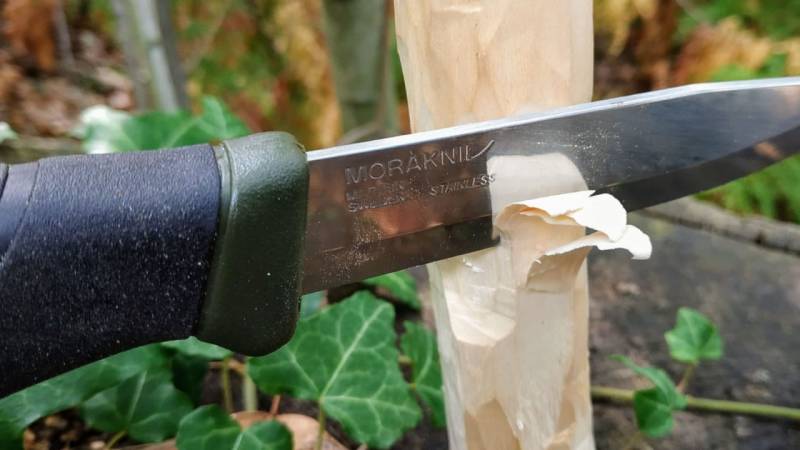
Choose wisely and test knives
The fact is: The selection of the right blade grind for your outdoor knife is crucial to ensure the best possible performance and functionality.
By understanding the different grinds and their properties, you can choose the perfect knife for your outdoor adventures.
Also, make sure to select high-quality materials for the blade (read more about steel types here) and the handle, and regularly maintain your knife to ensure its longevity.
With the right knife, you are well-equipped to explore nature and enjoy your outdoor experiences.
Matching that, I can recommend my guides and best list for knives:
- The 10 best bushcraft knives - your ultimate buying guide
- The 6 best survival knives - surviving in the wilderness and city
- The 8 best bushcraft knives with firesteel [+ buying guide]

Sources for the guide

Author of the guide
Martin Gebhardt
Hey, I'm Martin. On my blog, you will learn the basics and numerous details about living in the wild. I think survival, bushcraft and the good life in nature are the keys to happiness. Find me here on Instagram or on YouTube. You can find more about my mission on the About Me page.
Since this is a gear guide, here ...
🤝8 reasons to trust my recommendation
-
Practical Experience: I have tested most of the products I recommend under extreme conditions myself.
-
Independence: As a wilderness mentor, I am not tied to any specific brands - this means my recommendations are unbiased.
-
Expertise: My many years of experience allow me to understand the intricacies and details of various products that a layperson might overlook.
-
Target group understanding: I understand the needs and challenges of outdoor enthusiasts, from beginners to seasoned experts.
-
Quality focus: I attach great importance to quality and longevity. These are characteristics that are crucial in the wild.
-
Clear communication: I try to explain the pros and cons of each product clearly and understandably so that you can make an informed decision.
-
Currentness: I always keep my guides up to date and adapt them to new findings or products.
-
Community Feedback: I work in wilderness schools, teach courses myself, attend courses and am active in various outdoor and survival communities and therefore integrate the feedback and experiences of others into my recommendations.
So when I introduce the best survival knives or flashlights, you can be sure that every recommendation is based on solid experience and extensive knowledge.
Was this guide helpful?
23 people found this guide helpful.
5.00 out of 5 points (23 Ratings)
Comments (0)
This post may contain affiliate links. So if you click on the links and make a purchase, I will receive a small commission at no additional cost to you. Click here, to learn more about it.


